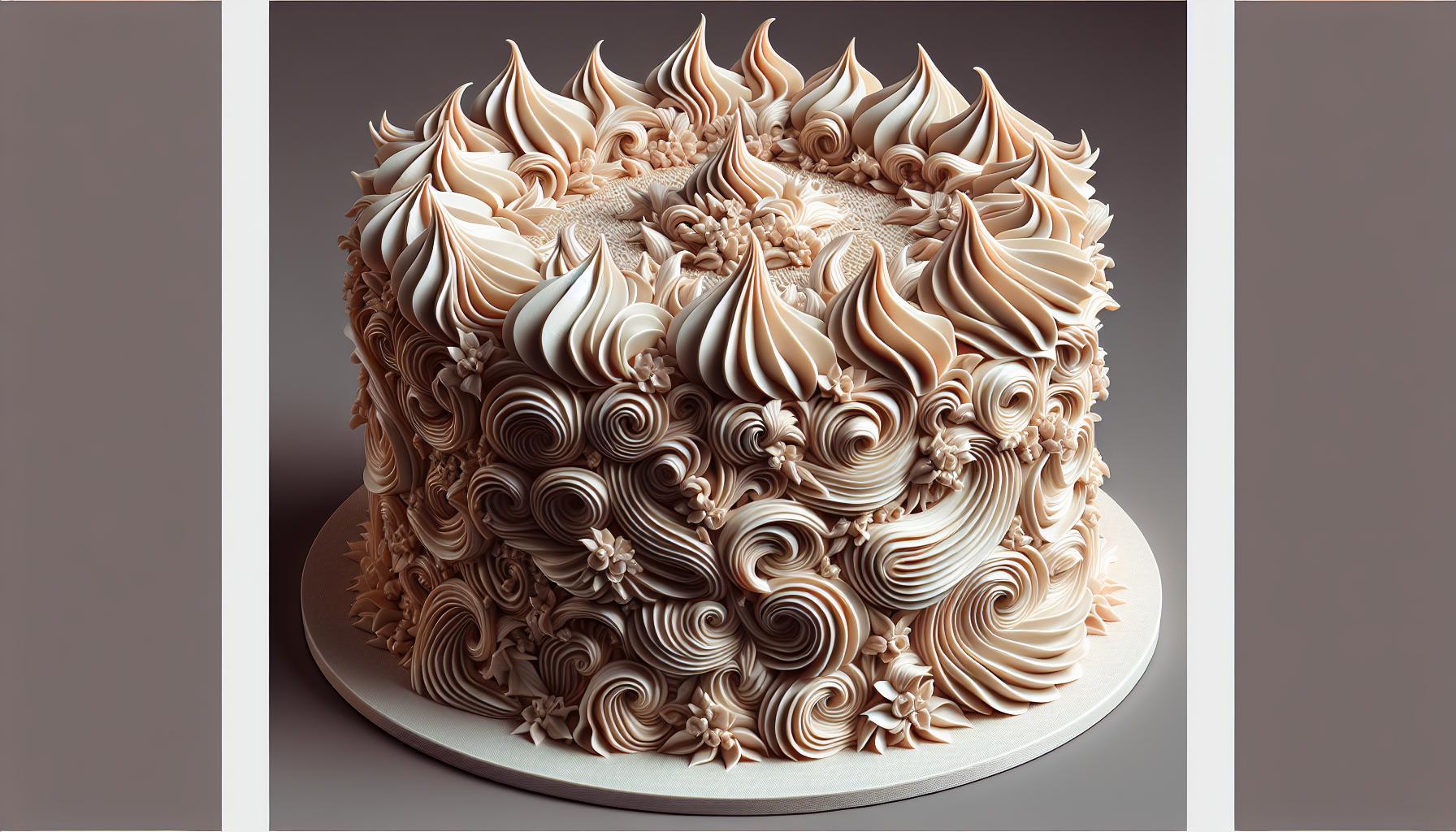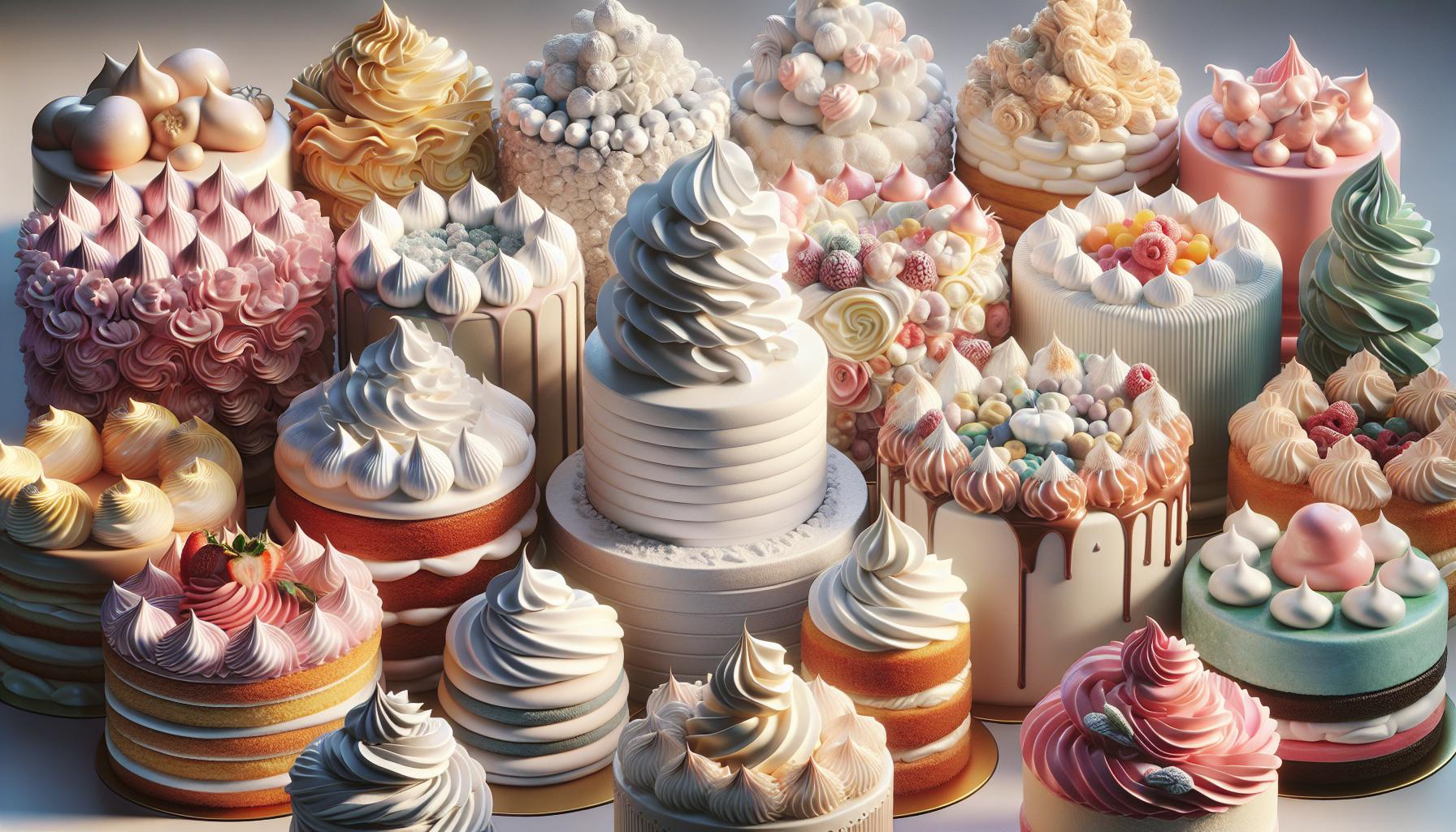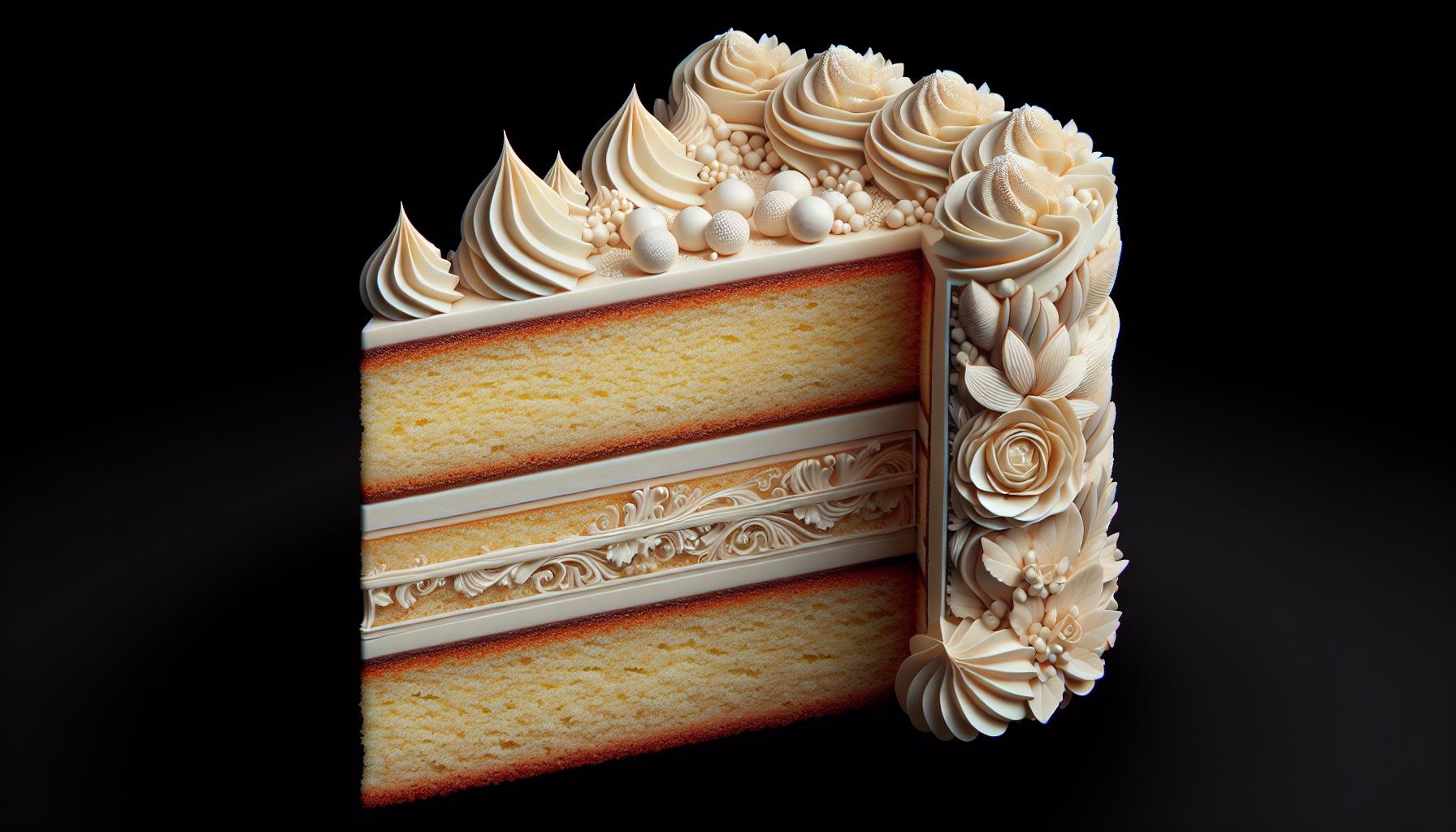This post contains affiliate links. See the affiliate disclaimer here.
When you’re planning that perfect cake, the icing choice can be a game-changer. Whipped icing and buttercream are two popular contenders, each with a unique set of attributes that can elevate your dessert. You might find yourself wondering, which one’s the best fit for your sweet creation?
Whipped icing, known for its light and airy texture, promises a not-too-sweet finish that’s perfect for those who prefer a subtler taste. On the other hand, buttercream, with its rich and creamy consistency, offers a luxurious and indulgent experience that’s hard to resist. Let’s dive into the delicious details of whipped icing versus buttercream to help you make the ultimate choice for your next baking adventure.
Whipped Icing: Light and Airy
When you’re looking for a frosting that won’t overpower your delicate cakes, whipped icing is your go-to choice. It’s as light as a cloud and provides a gentle sweet touch to any dessert. Its airy texture comes from the process of whipping heavy cream or cream cheese with sugar, creating a fluffy and smooth topping for your cakes and cupcakes.
Whipped icing is also incredibly versatile. You can enhance it with various flavors from vanilla to fruit purees, adapting it effortlessly to complement your dessert’s profile. For those concerned about richness, whipped icing is less dense than buttercream, making it a favorite for those who prefer a subtler taste.
In terms of decoration, though it may not hold intricate designs like its buttercream counterpart, whipped icing excels in creating rustic and homey finishes. It spreads smoothly over your baked goods and can be piped into simple borders and swirls. Its lightness also offers the perfect backdrop for fresh fruit toppings or delicate chocolate shavings, adding a touch of elegance without extra heft.
If you’re planning a summer gathering, whipped icing is an excellent choice because it’s refreshing and less likely to melt away in warm weather compared to other frostings. However, it’s worth noting that whipped icing should be kept refrigerated until it’s time to serve up your sweet treat to preserve its delightful texture and prevent it from becoming too soft.
Whether you’re crafting a light sponge or a zesty lemon cake, whipped icing is sure to enhance your dessert without overshadowing the flavors you’ve worked so hard to develop. Keep in mind that while it offers a more subtle flavor profile, it can still be flavored to suit your liking, making it a truly flexible addition to your baking repertoire.
Buttercream: Rich and Creamy

When you’re looking for a frosting that’s rich with a creamy texture, buttercream is often your go-to choice. Unlike whipped icing, buttercream boasts a denser consistency that holds its shape incredibly well, making it ideal for detailed piping and sculpted designs. Its smooth, buttery base is perfect for those who prefer a more indulgent taste.
There are several types of buttercream that you might explore:
- American Buttercream: This is the most common variety, known for its sweet and simple mix of butter, powdered sugar, and milk or cream. It’s easy to color and flavor, which explains its popularity for festive cakes and cupcakes.
- Swiss Meringue Buttercream: A notch more sophisticated, it’s made with egg whites and granulated sugar whipped into a glossy meringue before adding butter. This type offers a silkier texture and is less sweet.
- Italian Meringue Buttercream: Similar to Swiss, but the sugar is cooked to a syrup before incorporating it into whipped egg whites. It’s smooth and luxurious, ideal for those looking for a less sugary frosting.
In terms of customization, buttercream is incredibly versatile. You can infuse it with a myriad of flavors, from classic vanilla and chocolate to fruity and boozy twists that elevate any dessert.
As rich as it is, remember that buttercream can be sensitive to heat. On a hot day or in a warm room, it may soften and lose its form, so keep your frosted creations cool for optimal presentation. However, its ability to withstand temperature shifts better than whipped icing makes it a dependable option for events not refrigerated throughout.
Storage is another factor where buttercream shines with its relatively longer shelf-life compared to whipped icing. It doesn’t require strict refrigeration and can be made in advance, simplifying your preparation process.
Whether you’re crafting a birthday cake or topping cupcakes for a bridal shower, buttercream’s rich and creamy character is a timeless choice that never fails to impress those with a penchant for sweetness.
Texture Comparison: Light vs Creamy

As you delve into the world of frostings, understanding the texture differences between whipped icing and buttercream is crucial. Whipped icing boasts a light and airy texture which comes from its process of incorporating air during whipping. It’s so airy that it almost melts in your mouth, providing a gentle sweetness that’s not overpowering. This makes it an excellent choice for those who prefer a less sweet frosting that doesn’t overshadow the cake’s flavor.
In contrast, buttercream is known for its rich and creamy consistency. It’s denser than its whipped counterpart, offering a luxurious texture that can hold intricate designs and borders. Your taste buds will recognize its buttery base which contributes to the overall decadence of the dessert. Plus, if you’re looking to customize your cake’s flavor, buttercream is a reliable foundation for incorporating a variety of extracts, fruit purees, or even chocolate.
The type of buttercream also influences its texture:
- American Buttercream is the simplest form, usually sweeter and thicker, making it user-friendly for beginners.
- Swiss Meringue Buttercream is smooth and silky, with a balanced sweetness, great for a more refined look.
- Italian Meringue Buttercream is the richest of the three, with a slightly chewy texture and not as sweet as the American version.
Below is a quick comparison chart to help you visualize the differences:
| Frosting Type | Texture | Sweetness Level |
|---|---|---|
| Whipped Icing | Light and Airy | Low to Moderate |
| American Buttercream | Thick and Rich | High |
| Swiss Meringue Buttercream | Smooth and Silky | Moderate |
| Italian Meringue Buttercream | Creamy and Dense | Moderate |
Whether you’re crafting a cake for a formal event or a casual birthday party, your choice between whipped icing and buttercream will largely depend on the desired texture and how it complements your overall dessert presentation. Remember, it’s not just about the taste but the tactile experience of each bite. Choose wisely to enhance not just the flavor but the whole dessert-eating experience.
Taste Comparison: Subtle vs Indulgent

When it comes to choosing between whipped icing and buttercream, your palate is the ultimate judge. Whipped icing is often less sweet than its counterpart, offering a gentle, subtle flavor that doesn’t overpower the cake. It’s ideal for those who prefer a light sweetness that enhances rather than competes with the primary dessert.
Buttercream frosting, on the other hand, is a go-to for the indulgent taste it provides. Its higher sugar content delivers a bolder, sweeter profile, making it the frosting of choice for those with a sweet tooth. The distinct buttery flavor in buttercream is rich and impossible to miss, often taking center stage in a dessert.
The two frostings not only diverge in taste but also in how they carry additional flavorings:
- Whipped icing, with its mild nature, can be a graceful host to subtle flavors like citrus zest or light fruit essences.
- Buttercream, with its robust presence, tends to pair better with strong, bold flavors such as chocolate or espresso.
Making the right choice between these two frostings can impact the overall sensory experience of your dessert. While taste is subjective, knowing the properties of each can guide your decision. Consider your own flavor preferences, the occasion, and the taste expectations of your audience.
Remember, it’s not just about the sweetness level but also the way these icings interplay with other ingredients. The sponge of the cake, added layers, and garnishes all contribute to the final taste profile of your dessert.
To ensure your dessert hits all the right notes, experiment with both frostings in different contexts. Sampling them with various cake bases and in conjunction with other flavors will help you understand the unique qualities they bring to the table. Whipped icing might be perfect for a light springtime cake, while buttercream could be the sumptuous finish needed for a dense, rich chocolate cake.
Choosing the Perfect Fit

When deciding between whipped icing and buttercream for your cake, consider the event’s theme and aesthetic. Whipped icing, with its light and airy texture, is ideal for a more sophisticated, understated look. It’s fantastic for outdoor summer events where a lighter fare might be more appropriate. Meanwhile, buttercream frosting with its rich and creamy consistency, lends itself to more opulent events and can withstand indoor conditions for more extended periods without melting.
Texture isn’t the only deciding factor; think about dietary restrictions and preferences of your guests. Whipped icing generally contains less sugar and fat, making it a slightly better option for guests who are watching their caloric intake. On the other hand, traditional buttercream, loaded with butter and sugar, may not be suitable for everyone’s diet but definitely caters to those seeking an indulgent treat.
- Dietary considerations: Whipped icing, with its lighter sugar and fat content, might align better with dietary preferences.
- Climate and location: For warmer climates, whipped icing may fare better, whereas buttercream can withstand various indoor conditions.
Additionally, the spreadability and stability of these frostings are worth noting. Whipped icing spreads smoothly but can be delicate – if your design requires more intricate piping, buttercream may be the way to go. It’s more reliable for detailed decorations that need to hold their shape. With buttercream, you’ll have the freedom to create elaborate and artistic designs that stand the test of time (and temperature).
- Decorating needs: If intricate designs are on your agenda, go for buttercream’s superior stability.
Ultimately, your choice of icing should resonate with the flavor profile of the cake itself. For cakes with nuanced flavors, whipped icing can subtly elevate the taste without overwhelming your palate. But if you’ve got a bold-flavored cake, buttercream’s intensity can match and complement it perfectly.
Conclusion
Deciding between whipped icing and buttercream isn’t just about taste—it’s about creating the perfect complement to your cake. Whether you’re after the lightness of whipped icing for a delicate flavor enhancement or the rich sweetness of buttercream for a bolder statement, your choice will set the tone for your dessert. Remember to consider the event’s style, the preferences of your guests, and the climate when making your decision. Whipped icing might charm at a summer garden party, while buttercream could be the crowning glory at an indulgent celebration. Don’t be afraid to experiment and find the frosting that not only tastes great but also brings your cake to life.
Frequently Asked Questions
What is the main difference between whipped icing and buttercream frosting?
Whipped icing is typically less sweet and has a light texture, providing a subtle flavor enhancement to cakes. Buttercream frosting is richer and sweeter, with a strong buttery taste that often becomes a central flavor component.
When should I choose whipped icing over buttercream frosting?
Choose whipped icing if you prefer a lighter, less sweet enhancement to your cake, especially if you’re pairing it with delicate flavors like citrus. It’s also suitable for events where a subtle taste is desired.
What types of flavors go well with buttercream frosting?
Buttercream frosting pairs well with bold flavors such as chocolate or espresso. Its sweetness and texture complement rich, intense cake flavors.
How does the event’s theme influence the choice between whipped icing and buttercream frosting?
The event’s theme might influence your icing choice based on aesthetic and taste expectations. Whipped icing is airy and can appear more elegant, while buttercream is versatile for a range of designs and themes.
What should I consider regarding guests’ dietary restrictions when choosing frosting?
When considering dietary restrictions, be aware of ingredients like dairy in buttercream frosting. Opt for alternatives like whipped coconut cream for guests with lactose intolerance or vegan preferences.
Does climate affect the choice between whipped icing and buttercream frosting?
Yes, climate can affect your choice. Whipped icing can melt or deflate in hot weather, while buttercream frosting is generally more stable and can withstand warmer temperatures better.
Why is it important for the icing to match the cake’s flavor profile?
The icing should complement the cake’s flavors without overpowering it. A mismatch can result in a discordant taste experience. Select an icing that harmonizes with the cake’s flavor profile for a balanced dessert.

